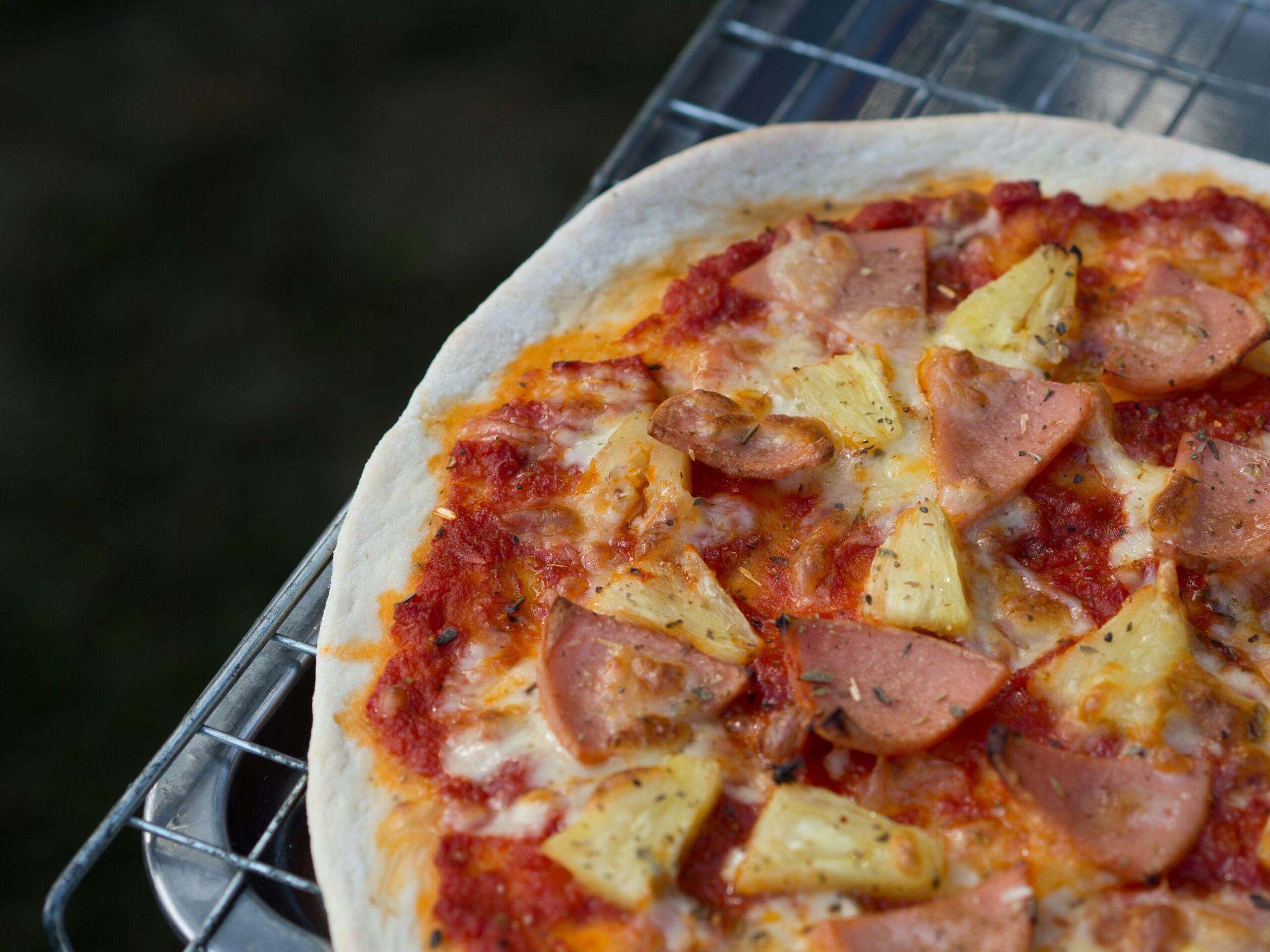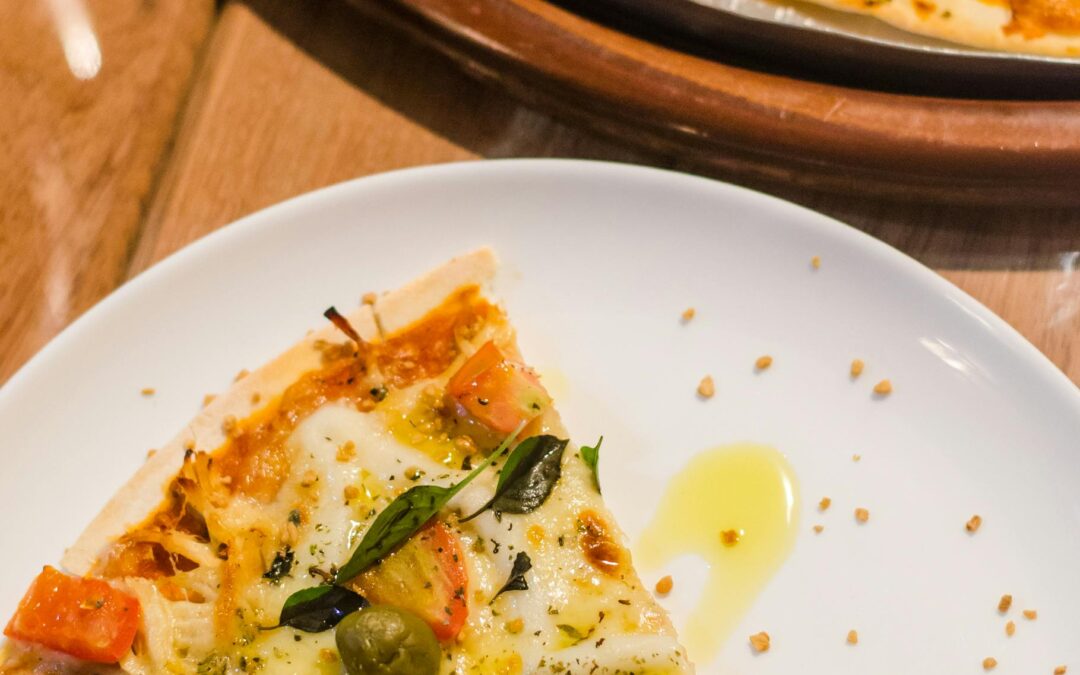Pizza has been a beloved dish worldwide for centuries, with countless variations and toppings developed across cultures. While traditional purists might advocate for simplicity, culinary innovation has given us some truly remarkable combinations that challenge conventional wisdom. Among these creative concoctions, one stands out for both its deliciousness and its ability to spark passionate debate among food enthusiasts everywhere.
The Origin of Pineapple Pizza
The story of pineapple pizza begins not in Italy as many might assume, but rather in Canada. The now-famous Hawaiian pizza was invented in 1962 by Sam Panopoulos, a Greek immigrant who owned a restaurant in Ontario. Contrary to popular belief, this sweet and savoury combination wasn’t the result of culinary tradition but rather a bold experiment. Panopoulos, inspired by the contrasting flavours in Chinese sweet and sour dishes, decided to add canned pineapple to pizza, pairing it with ham to create what we now know as Hawaiian_pizza. The name itself didn’t reference Hawaiian cuisine but came simply from the brand of tinned pineapple used in the original recipe.
The Hawaiian Pizza Innovation
This culinary creation wasn’t the first attempt at combining sweet and savoury elements in a flatbread format. Interestingly, Germany had already embraced a similar concept in 1955 with their ‘Toast Hawaii’, featuring ham, pineapple, and cheese on toast. Just two years later in 1957, a version called ‘Hawaiian Pizza’ containing pineapple, papaya, and chopped green pepper (though notably lacking ham or bacon) appeared in Portland, Oregon. However, it was Panopoulos who popularised the now-familiar combination of tomato sauce, mozzarella, ham, and pineapple that gained worldwide recognition.
From Controversy to Global Phenomenon
The journey from local Canadian curiosity to global pizza phenomenon wasn’t without controversy. In fact, few food items have generated such passionate discourse. The debate reached new heights in 2017 when the president of Iceland jokingly suggested banning pineapple as a pizza topping, sparking international headlines. Celebrity chefs and public figures have frequently weighed in, from Gordon Ramsay’s criticism to Justin Trudeau and Dwayne ‘The Rock’ Johnson’s supportive stances. Despite the controversy, Time magazine listed Hawaiian pizza as one of the most influential pizzas of all time in 2014, cementing its cultural significance. Its popularity varies dramatically by region – in 1999, it represented a whopping 15% of pizza sales in Australia, making it the country’s most popular variant. Similarly, in 2015, it was the most commonly available pizza in UK takeaways on the Just Eat platform.

Sweet and Savoury Balance
The enduring appeal of pineapple pizza lies in its masterful balance of contrasting flavours. The sweetness of pineapple creates a remarkable counterpoint to the savoury elements of pizza, offering a unique taste experience that has won over millions of enthusiasts worldwide. This combination challenges traditional culinary expectations, creating something greater than the sum of its parts.
The Perfect Flavour Contrast
What makes pineapple pizza so special is the interplay between sweet and savoury elements. The natural sugars in pineapple caramelise slightly during baking, intensifying their sweetness while also developing deeper, more complex flavours. This sweetness provides a refreshing contrast to the saltiness of ham or bacon and the umami-rich cheese and tomato sauce. Each bite delivers a harmonious balance that stimulates multiple taste receptors simultaneously, creating a more engaging eating experience than many traditional pizza toppings can offer. This flavour complexity explains why many who try it with an open mind become enthusiastic converts.
Complementary Ingredients for Pineapple Pizza
While the classic Hawaiian pizza pairs pineapple with ham, creative chefs have developed numerous variations that enhance this versatile topping. Bacon offers a smokier alternative to traditional ham, while spicy ingredients like jalapeños or hot honey create a delightful sweet-heat combination. Some innovative recipes incorporate complementary fruits like mango or ingredients that emphasise umami flavours to further enhance the complexity. Award-winning pizza chef Franco Pepe takes a sophisticated approach, using fresh pineapple rather than canned in his creations to avoid flavour clashes with tomato sauce. This attention to quality and balance demonstrates that pineapple pizza, when thoughtfully prepared, can satisfy even the most discerning palates.
The Culinary Science Behind Pineapple Pizza
Beyond personal preference, there are scientific reasons why the combination of pineapple and traditional pizza ingredients works so well. Understanding the chemistry and food science at play helps explain why this controversial topping has earned such a dedicated following despite vocal opposition.
Why Pineapple Enhances Pizza Texture
Texture plays a crucial role in our enjoyment of food, and pineapple brings unique textural elements to pizza. The fruit contains bromelain, an enzyme that breaks down proteins, which can tenderise the surrounding ingredients slightly. This creates a pleasant textural contrast between the slightly firm fruit, melted cheese, and chewy crust. Moreover, the moisture content in pineapple helps prevent the pizza from becoming too dry during baking, particularly in versions with substantial amounts of meat toppings that might otherwise create an imbalance. This moisture contribution is especially valuable in modern high-temperature pizza ovens that can sometimes risk over-drying toppings.
The Chemical Reactions During Baking
When pineapple bakes in a pizza oven, fascinating chemical transformations occur. The natural sugars undergo caramelisation, creating new flavour compounds that weren’t present in the raw fruit. Additionally, Maillard reactions between the sugars and amino acids produce appealing brown colours and develop complex flavours. These reactions integrate the fruit more harmoniously with the other toppings, softening its acidity while enhancing its sweetness. The acidic nature of pineapple also provides a brightening effect on the overall flavour profile, cutting through the richness of cheese and meat to create a more balanced eating experience with less palate fatigue.
Global Variations of Pineapple Pizza
As pineapple pizza has spread worldwide, different cultures have adapted the concept to suit local tastes and ingredients. These regional interpretations demonstrate the versatility of pineapple as a pizza topping and its ability to complement diverse culinary traditions.
Regional Adaptations and Twists
Around the world, pineapple pizza takes on different forms reflecting local preferences. In Brazil, versions often include corn and cream cheese alongside the pineapple for an even more unorthodox but beloved combination. Japanese interpretations might incorporate teriyaki chicken with pineapple, creating an umami-rich variation that has gained popularity in Tokyo pizzerias featured in Time Out’s global pizza rankings. Australian pizzerias frequently add bacon and prawns to the traditional Hawaiian formula for their unique take. Even in Italy, the birthplace of pizza, some forward-thinking establishments have begun incorporating fresh, locally-grown pineapple in seasonal specialties, though typically with more restraint than their international counterparts. These global variations show how the basic concept continues to evolve and adapt to diverse culinary landscapes.
Celebrity Chefs’ Pineapple Pizza Recipes
Several renowned chefs have embraced pineapple as a pizza topping, creating sophisticated versions that elevate the concept. These culinary professionals often focus on quality and balance, using fresh pineapple rather than canned varieties and pairing it with complementary ingredients that enhance rather than compete with its flavours. Some chefs grill or roast the pineapple before adding it to the pizza, concentrating its sweetness and adding smoky notes. Others incorporate unexpected elements like chilli-infused honey or aged balsamic vinegar to create more nuanced flavour profiles. These refined approaches demonstrate that pineapple pizza, far from being merely a controversial novelty, can be a legitimate canvas for culinary creativity at the highest levels.
Pairing Suggestions
The unique flavour profile of pineapple pizza creates interesting opportunities for beverage and side dish pairings. The right accompaniments can enhance the sweet and savoury contrast that makes this pizza style so distinctive.
Drinks That Elevate Pineapple Pizza
Finding the perfect beverage to accompany pineapple pizza involves balancing its sweet and savoury elements. Crisp white wines like Riesling or Gewürztraminer offer complementary fruit notes and sufficient acidity to refresh the palate. Beer enthusiasts might consider wheat beers or fruited sour ales, which echo the tropical notes of pineapple while providing effervescence that cleanses the palate between bites. For non-alcoholic options, sparkling water with a squeeze of lime or tropical iced teas provide similar refreshing qualities. The key is finding beverages that either complement the sweetness of the pineapple or provide a contrasting crispness that balances the richness of cheese and meat toppings.
Side Dishes for a Complete Meal
When serving pineapple pizza as part of a complete meal, consider side dishes that enhance rather than compete with its distinctive flavour profile. A simple green salad dressed with a light vinaigrette can provide a refreshing counterpoint to the richness of the pizza. Vegetable sides with complementary sweetness, such as roasted peppers or caramelised onions, create harmony with the pineapple elements. For a more substantial meal, consider Mediterranean-inspired sides like marinated olives or a light Greek salad, which provide salty, briny notes that contrast beautifully with the sweetness of the pineapple. These thoughtful pairings can transform a casual pizza night into a more complete dining experience that showcases the versatility of this controversial yet beloved pizza style.
Top 7 Best Pizzas of 2025
According to a recent 2025 survey conducted by Ipsos among 2,500 respondents, the following pizzas are rated as the top choices for audacious and original flavours among French consumers (https://www.ipsos.com/fr-fr/les-pizzas-preferees-des-francais):
- Hawaiian Pizza (featuring pineapple and ham) — ranked as the most innovative and satisfying pizza for adventurous flavors (35%).
- Reine (ham and mushrooms) — 28%.
- Quatre Fromages — 22%.
- Orientale (merguez and peppers) — 9%.
- Margherita (tomato-mozzarella) — 6%.

